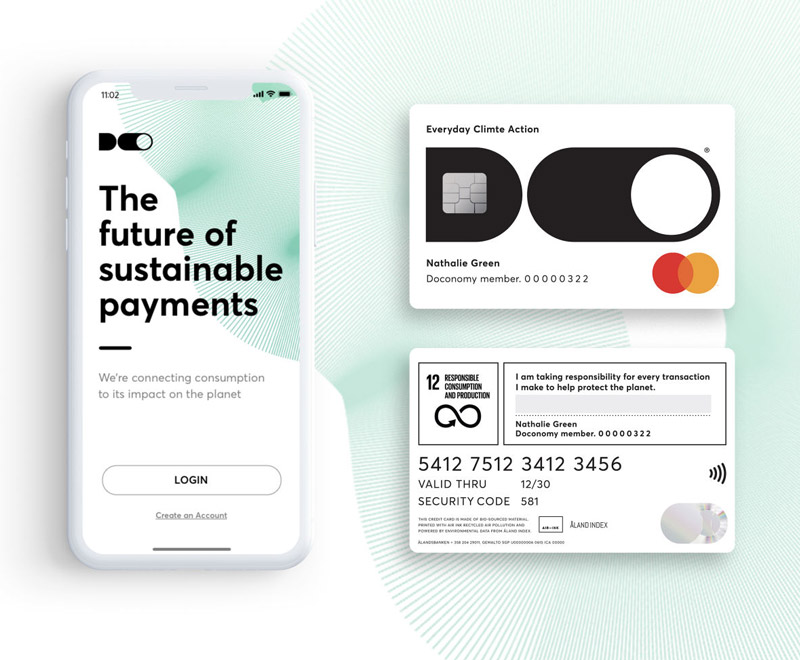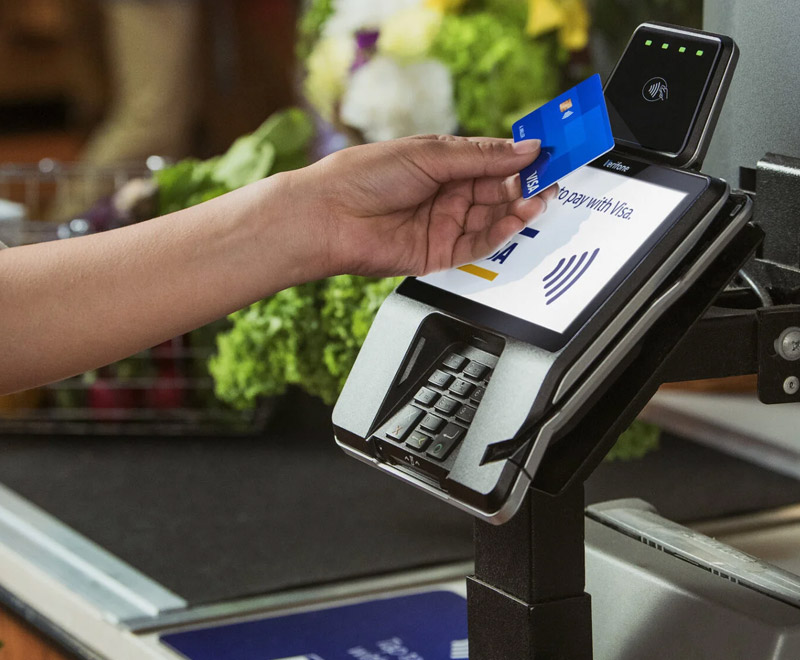

Throughout my years in the innovation and design space within FSIs, it’s been surprising to see how sustainability and 'green' initiatives often didn’t take centre stage. While the topic surfaced occasionally, one would expect that in today's world—where the climate crisis is a pressing concern—every industry and new project would rigorously reassess its environmental footprint.
The payments sector, despite being a crucial and arguably the most frequent touchpoint between consumers and financial services, isn’t typically associated with sustainability. However, I believe that with the right focus, this sector is primed for eco-friendly innovation. In this article, I delve into the concept of ‘Green Payments’—a vision that goes beyond simply making transactions more planet-friendly to reimagining the entire payments ecosystem through a sustainable lens.
Simply put, the idea behind Green Payments is to proactively reduce the environmental impact of a purchase – at a transaction level. This could be as simple as using digital wallets to cut down on paper receipts and plastic cards, or as complex as developing carbon-neutral payment platforms. The goal is clear: to ensure that the way we pay for things doesn’t come at the cost of our planet.
I think for us to get a better and more well-rounded view, we have to take a service design approach and an ecosystem view of how payments are actioned. This would allow us to identify where there are real opportunities for Green Transformation. Every time we tap our phone or swipe our card, a series of processes kicks into gear. Data centres whir into action, networks buzz with activity, before a transaction can be completed. So that innocent little ‘tap to pay’ when multiplied by billions of transactions each day, has a significant energy cost. The idea of Green Payments seek to streamline this process, using less energy, producing less waste, and ideally, even contributing to environmental causes.

In addition to the energy costs, the number of plastic payment cards that are discarded every year is absolutely insane. While researching for this article I found out that globally 69 plastic cards are discarded and go into landfill – every second! That’s every second of every single day. In the UK alone, over 100 million payment cards are issued each year (UK Cards Association, 2020), and when you consider that most cards are made from non-biodegradable plastics, this is a very heavy cost to the planet.
The emergence of digital wallets and digital provisioning of cards, while certainly more convenient, aren’t without their environmental costs. The global payments industry is estimated to consume over 250 terawatt-hours (TWh) of energy annually—comparable to the energy consumption of a small country (World Payments Report, 2021). Green payments aim to shrink this footprint by embracing more energy-efficient technologies and shifting to renewable energy sources for those power-hungry data centres.
Becoming ‘Green’ is as much a behavioural and human problem as it is a technology problem, which is precisely why I feel that taking a Design-led approach to Green Payments is the way to go. Creating eco-friendly payment solutions is one thing, but encouraging people to actually use them? That’s where great design makes all the difference. It’s not enough to have a brilliant, planet-saving idea; it needs to be intuitive and seamless, so people naturally gravitate towards it.
Digital wallets and digital provisioning of payment and loyalty cards is a fantastic way to reduce our reliance on physical materials, but they must be easy to use. Apple, Google and other ‘Pays’ have become the preferred form of payment for a lot of us now, however digital payments and loyalty cards still take lots of different shapes and if the experience is clunky or confusing, users will stick with their plastic cards. This is where thoughtful design becomes crucial. By crafting a user experience that’s smooth, secure, and enjoyable, we can nudge more people towards going digital—and in turn, reduce the production and disposal of physical cards.
It’s not just about digital solutions, though. We’re seeing a rise in eco-friendly payment cards too. Banks and financial institutions are getting creative with materials, exploring options like recycled plastic or even biodegradable alternatives. NatWest, for example, has introduced debit cards made from 86% recycled materials, significantly reducing the environmental impact of producing and discarding conventional plastic cards (NatWest, 2022).
I’m certain that there are plenty more initiatives in this space, but I’ve highlighted three which I felt were the standout examples, both in terms of the actual customer experience and the overall impact potential of the initiatives. Each of these examples demonstrates how creativity and forward-thinking can make a tangible impact.

Doconomy
DO Card
Swedish fintech company Doconomy has developed something truly innovative—the DO card. This credit card is linked to an app that tracks the carbon footprint of every purchase. Users can see the environmental impact of their shopping habits in real-time and even offset their carbon footprint by investing in certified climate projects directly through the app. It’s an idea that’s resonated globally; the app now tracks over 500 million transactions (Doconomy, 2023).
Stripe
Stripe Climate
Stripe, a major player in payment processing, has introduced Stripe Climate, an initiative where businesses using their platform can choose to direct a portion of their revenue towards carbon removal technologies. It’s a simple yet powerful idea with the potential to drive significant change. Thousands of companies have already committed a percentage of their revenue to fund these projects, making it one of the most substantial corporate efforts to combat climate change


Visa
Visa’s Eco Benefits
Visa’s Eco Benefits programme is another excellent example of innovation in this space. This initiative allows card issuers to add features like carbon footprint tracking and rewards for sustainable purchases to their products. Consumers can see the impact of their spending and are incentivised to make greener choices. By making these features part of their standard offering, Visa is helping to mainstream sustainability in everyday transactions. In fact, over 60% of UK consumers now express a preference for financial products that support environmental causes (Visa UK Consumer Study, 2023).
In all honesty, the examples I’ve included above are just the tip of the iceberg. The future of Green Payments will be shaped by continued innovation and a deep commitment to sustainability. We’re likely to see more companies exploring how they can integrate eco-friendly practices into their payment systems. This could involve wider adoption of energy-efficient technologies or developing new ways to incentivise sustainable consumer behaviour. I’ve included some high-level ideas that are certainly worth exploring further.
Green Rewards Programme
Concept: Create a rewards programme that offers points or cashback for eco-friendly purchases. For example, customers could earn extra points for buying from sustainable brands, using public transportation, or purchasing eco-friendly products.
Execution: Partner with green brands and services, creating a curated list of companies where customers can earn rewards. You could also offer discounts on eco-friendly products when points are redeemed.
Carbon Offset Integration
Concept: Integrate carbon offset options directly into the payment process. For every transaction, customers could choose to offset the carbon footprint by contributing to reforestation projects or renewable energy initiatives.
Execution: Collaborate with reputable environmental organisations to facilitate these offsets, allowing customers to see the tangible impact of their contributions. Offer them the ability to track their personal carbon offset history through the app or website.
Eco-friendly Digital Payments
Concept: Promote and incentivise the use of digital payments over paper-based methods, like cheques, which have a higher environmental impact. Encourage customers to go paperless with their statements and notifications.
Execution: Launch a campaign that highlights the environmental benefits of digital payments. Offer incentives such as fee waivers or additional rewards for customers who opt for paperless options.
Circular Economy Initiatives
Concept: Support the circular economy by partnering with platforms that facilitate the resale, recycling, or donation of goods. Encourage customers to participate by offering perks for transactions that support second-hand markets or recycling programs.
Execution: Collaborate with companies like eBay, Freecycle, or local recycling initiatives. Create an in-app section dedicated to promoting these eco-friendly actions, and provide benefits like waived transaction fees for relevant payments.
For green payments to truly become the norm, design and innovation need to work hand in hand. It’s not enough to create a sustainable product; it has to be something that people actually want to use. That’s where design comes in, ensuring that green payment solutions are not only effective but also user-friendly and accessible.
Green payments represent a significant stride towards a more sustainable future. They remind us that even the smallest actions—like how we choose to pay for things—can have a substantial impact on the environment. By focusing on design and innovation, we can make green payments a seamless part of everyday life, encouraging more people to make sustainable choices without even realising it.
As the industry continues to evolve, companies that embrace green payments and prioritise sustainability in their operations will not only help protect the planet but also position themselves as leaders in a rapidly changing market. In the end, green payments are about more than just reducing carbon footprints; they’re about reimagining the future of finance in a way that benefits everyone—especially our planet.
Usman is a digital veteran and a renowned expert in human-centric innovation and product design. As the founder of Pathfinders, Usman works directly with businesses to uncover disruptive opportunities and helps create tangible business value through design and innovation.
Book an initial consultation with Usman »